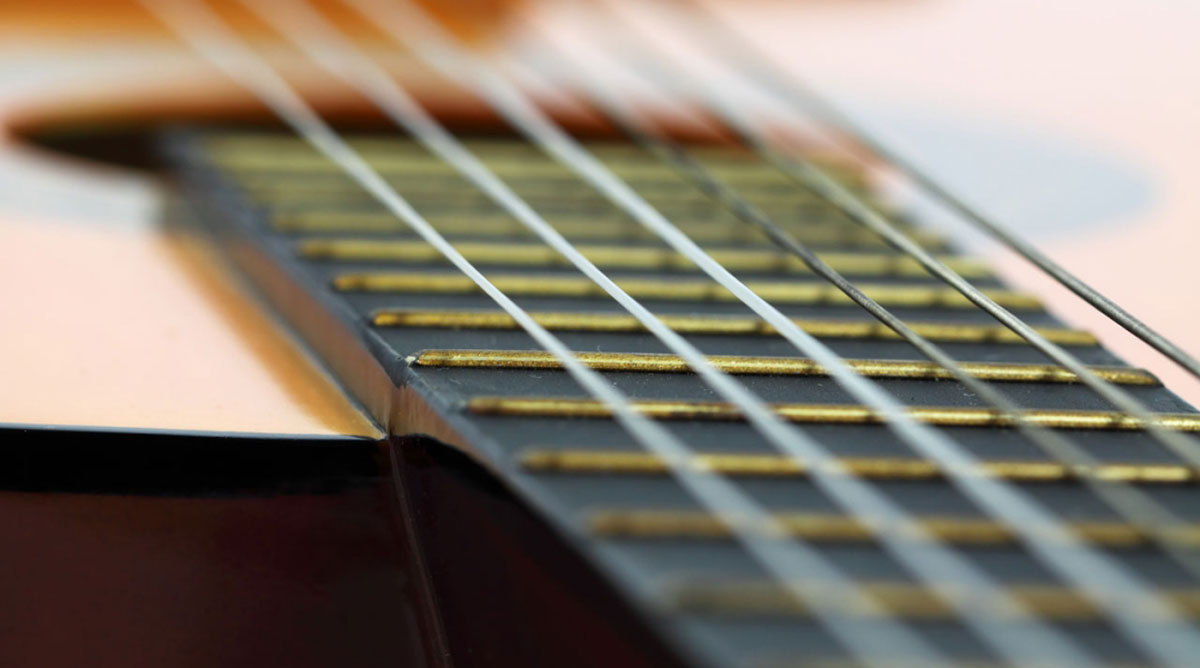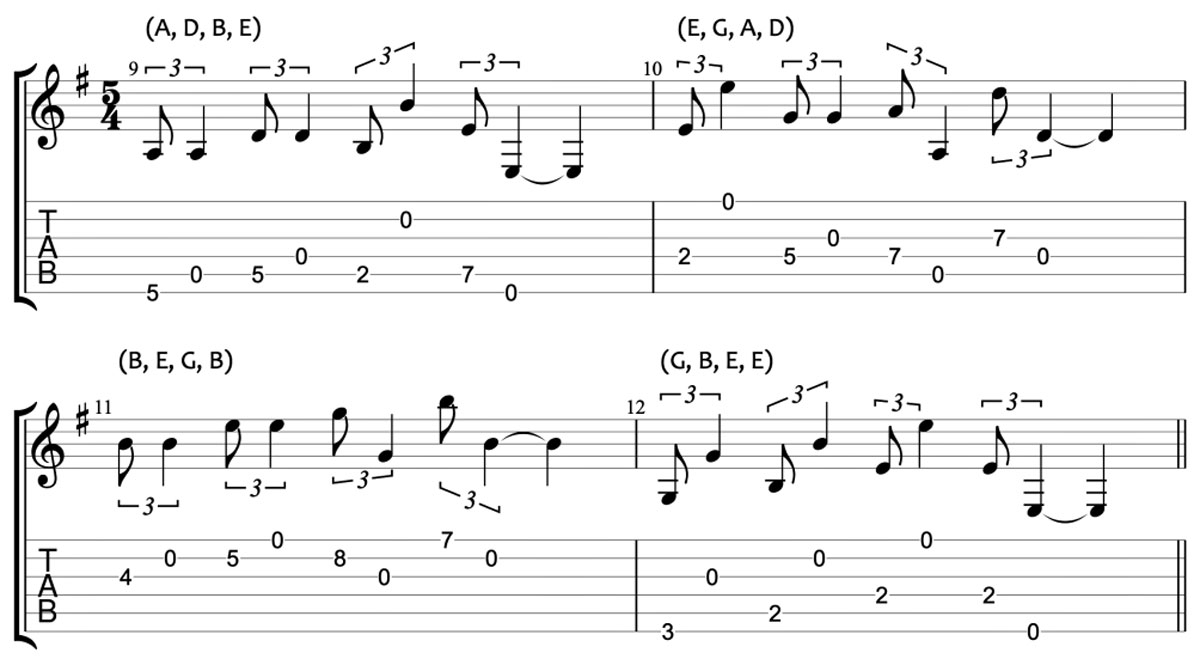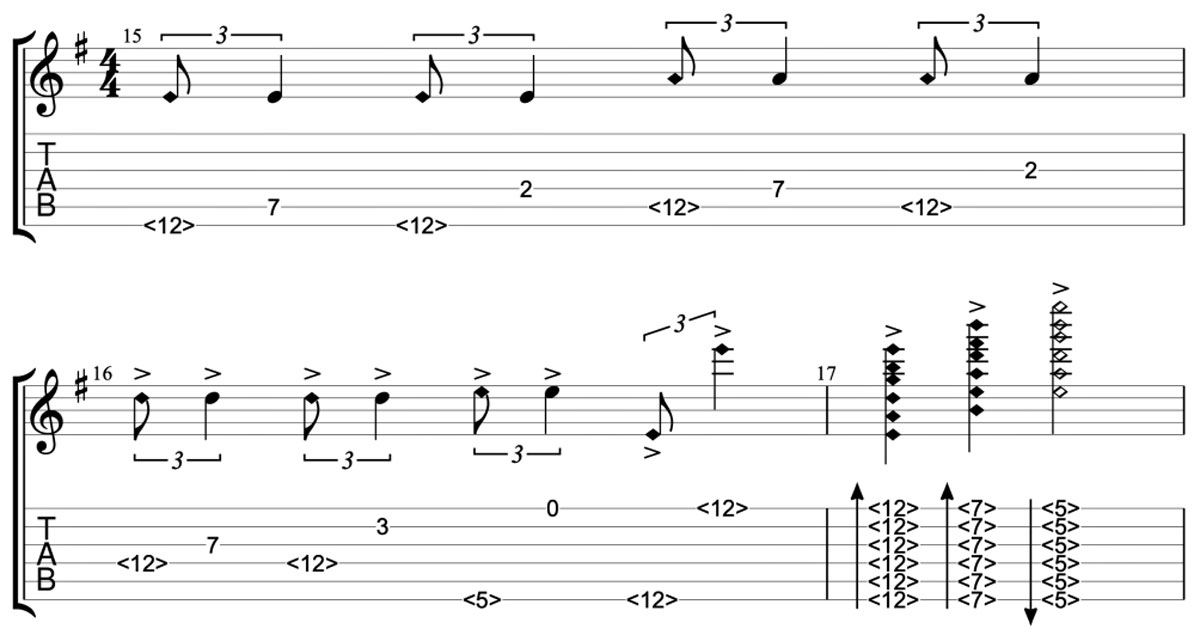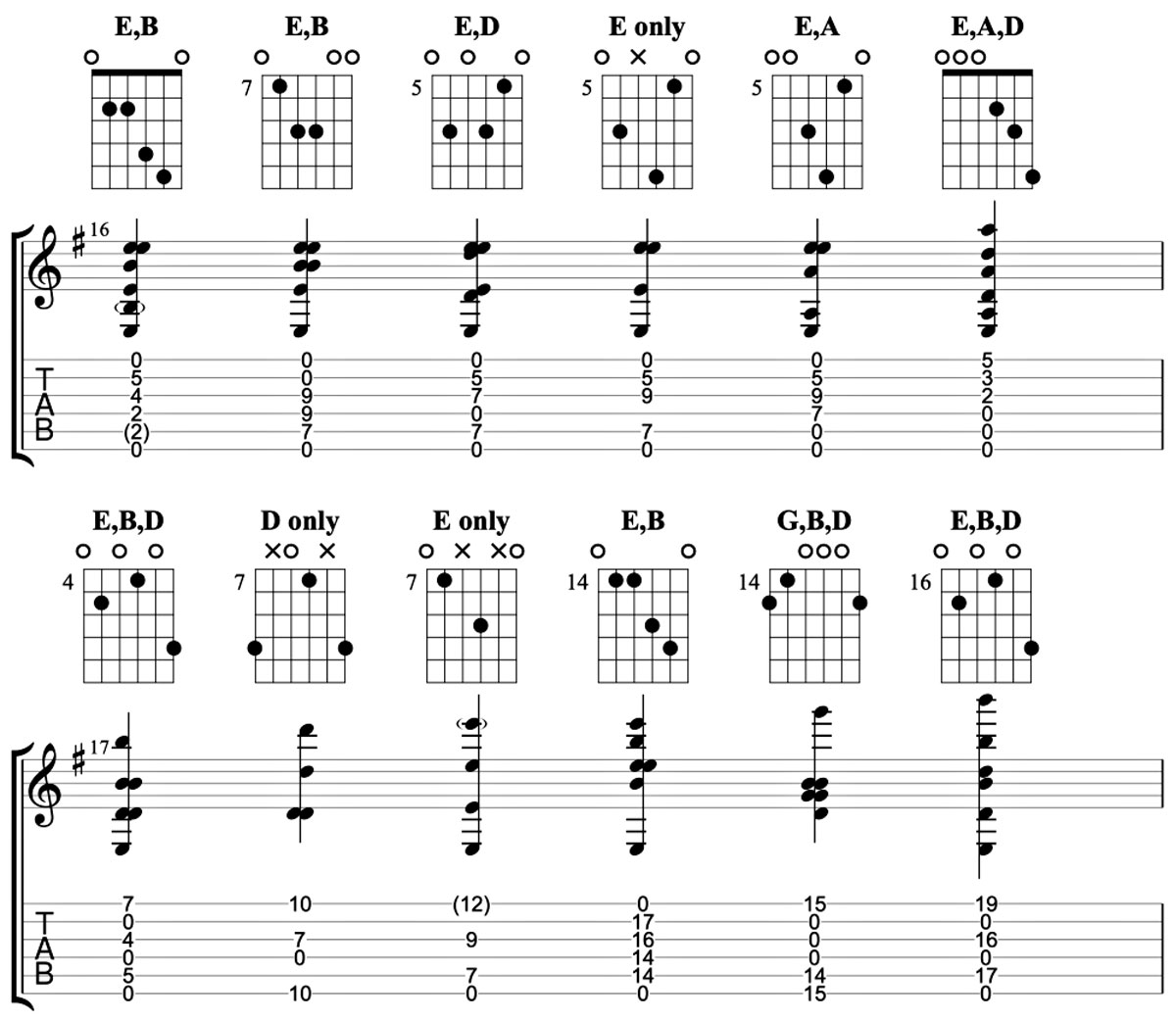The ultimate guitar tuning guide: expand your mind with these advanced tuning techniques
Go deep with this multi-pronged, hyper-accurate approach to tuning your guitar

How many of us really feel that our tuning habits are as good as they should be? Our ultimate tuning guide introduces the ‘impatient meditation’, a fresh, multi-pronged approach to tuning, designed to enhance your cognitive focus, hand health, ear strength, and fretboard awareness as well as maximizing tonal accuracy. Electronic tuners are great, but we shouldn’t have to rely on technology to save us.
Usually, I’m skeptical of anything that promises to ‘transform your playing with these three secrets’, or offers ‘five tricks to become a fretboard super ninja overnight’, and so forth. Playing guitar is an infinitely complex endeavor, with countless interlocking variables and a vast repertoire that would take even the most talented musician many lifetimes to master.
In the end, there are few shortcuts. But adopting some effective tuning methods might just qualify as one genuinely transformative, near-instant innovation.
It will literally enhance your control over every single note, and lies at the heart of broader guitaristic mastery. So this lesson is aimed at beginners and advanced guitarists alike - even Hendrix struggled with his tuning sometimes.

We all fall into lazy habits, allowing the compulsion to jam right now to override our better judgement. This results in much undesired dissonance, both literal and cognitive - the imperfections nag away at us, interrupting our flow, sapping our focus, and misbalancing the music.
We fret about whether to squeeze in some frantic peg-nudging, but even this is no guarantee of improvement (adjusting on the fly is a fine art).
It’s all right for pianists, who have a whole category of musical employment devoted to their every tuning need. Us guitarists have to do things ourselves... and we still endure the stereotype of doing them lazily (‘How can you tell when a guitarist is out of tune? His hand starts moving’).
All the latest guitar news, interviews, lessons, reviews, deals and more, direct to your inbox!
While we should definitely hit back with jibes of our own (‘Why are so many guitarist jokes one-liners? So the rest of the band can understand them’), we must also become masters of the tuning process, a complex, conceptually rich area of enquiry that connects together many aspects of musical perception.
Yes, electronic tuners are great, but we shouldn’t have to rely on gadgets to save us when it comes to something so basic. In any case, tuning is a fascinating area of enquiry, connecting together many aspects of musical perception and providing consistent spark to the creative imagination. Gaining ear confidence will filter through to our whole sound while deepening our appreciation for music in general.
I actually think we’re the lucky ones. Pianists, like most other instrumentalists, don’t have to pick all this apart so much, and they’re missing out. It’s consistently fascinating, and the ideas found here can give anyone creative inspiration.
The whole tuning process can even be re-conceptualized as a ritualistic act of mental, musical, and manual preparation. Or just a time to chill out before you play. Either way, it’s a lot more than just winding some pegs...
The ‘impatient meditation’: a fresh, multi-pronged tuning approach
The ‘impatient meditation’ isn’t an exact tuning method - it’s a way of approaching tuning. We aim to maximize flexibility, efficiency, and tonal precision by running through four concise ideas, which, taken together, allow us to balance the quirks of the guitar with the demands of the music at hand.
We’re probably… impatient, so here’s the tl;dr version (all tabs below):
● Get an overview: Slowly strum through the open strings and 12fr natural harmonics, taking a deep breath and focusing in on the sound to get a rough idea of where things are at.
● 5str fret-matching: Get your A as ‘in’ as is required, and tune the open strings to notes along it (2fr/5fr/7fr/10fr). Then, tune a selection of fretted As on the other strings back to the open A.
● Quick checks: Sample from three other methods to shore things up - melodic fret-matches, natural harmonics, and chordal checks. Try out key passages from your own music too.
● Musical focus: Strum the 12fr harmonics, and take another deep breath. Relax your mind, acknowledging any nerves, and then calmly orient your full attention towards the music at hand.
If you familiarize yourself with the strengths, weaknesses, and incongruities of each individual step, you will quickly build an intuition for when and how to deploy them.
Ideally, you’ll end up ‘narrowing down’, honing in on the most concise, pleasing phrase combinations for your own instrument and incorporating them into your playing routines.
A pristine, top-end Strat will be a different beast to the rickety nylon-string you found behind your friend’s couch, and we should be able to adapt to any axe we come across
Or, for that matter, any other instrument. A pristine, top-end Strat will be a different beast to the rickety nylon-string you found behind your friend’s couch, and we should be able to adapt to any axe we come across.
Using a tuner won’t help you compensate for the latter’s intonation issues, and besides, some songs on the former will sound better when left a little deliberately messy. The ideas below, when combined, help you know what you want, and should allow you to near-optimally tune virtually any guitar.
We can utilize tuning time to foster broader musical improvement too. Since the process will always be part of our playing routines, I figured we may as well also use it to enhance areas such as ear strength, cognitive focus, fretboard awareness, and manual dexterity. It’s also a fantastic way to build up core conceptual understanding around the physics of string vibration and the nature of aural perception.
All I’ve really done here is sample the best of a few tuning methodologies already in use, combining their strongest elements with a few minor adaptations and additions.
So it isn’t really my creation; at least no more than I could say invented my own style of cuisine yesterday by throwing together the tastiest things I found in the fridge with a dash of seasoning. I’ve incorporated feedback from friends, students, and the wider musical world too.
There’s an extended 10,000 word version of this article on my website, going in deep on the strengths and weaknesses of existing tuning techniques and explaining how this approach seeks to build on them.
We analyze James Taylor’s microtonal ‘stretched tuning’ and trace the design of guitar’s fretboard to the epic mathematical treatises of China’s Ming Dynasty, while also learning from ancient Vedic musicology and 21st-century theoretical physics. Tuning’s fascinations are in its interconnectedness.

Ingredients of the ‘impatient meditation’
This is more about the ‘how’ than the ‘why’. For the extra-curious, the full breakdown is on my website, with detailed musical and technical discussion. And I can’t stress enough - this is an approach to tuning rather than an exact method. Learn from it, pick out what you like, and stay flexible.
At first glance, four steps may seem like overkill (let’s be honest, you’re probably wondering if you can be bothered to internalize them all). But the combination is designed to foster efficient, intuitive self-learning, which always saves you time in the long run (...and often the fairly short run too).
Anyway, using all four each time isn’t the best approach - once you’ve tried everything on the menu, you’ll know quickly what you want next time.
You’ll be surprised at how fast you can speed things up without sacrificing on accuracy. Running through the checks can become second-nature, and, unless things are a complete mess, tuning may only require a few seconds.
It just tends to be taught badly (or barely taught at all) - there’s a whole lot of tuning-themed nonsense on the internet. Sitting down to learn things properly will permanently give us both a broader and finer control over our music, while also making everyone around us sound better.
- Get an overview: First, play the open strings and the 12fr harmonics in slow sequence, getting a rough feel for where things are at. Consider the music at hand, and also what imperfections the guitar itself may have. Take a deep breath, and really zoom in on the texture of the sound. (Unless it really sounds awful... in which case just get on with the next steps).
- Concert or relative? Decide whether you want to tune to exact concert pitch or not. If you do, match your A string to an external reference tone (maybe download the clip below to your phone). If you don’t, just make sure the A sounds and feels about right, and matches any other instruments in the room.
- Fret-matching: Roughly ’fret-match’ the other five open strings to notes on the A, and then flip things round, matching the open A to fretted tones on the other strings. Pick evenly, and if you’re playing through an amp, use a clean, mid-boosted tone. While you can of course check all the As against the reference tone, we should seek to develop the ear too.
Always use the ‘under-tug-up’ method - i.e. go lower than the target, tug the string around to remove slack, then raise the pitch. Pull it in all directions, being firm but avoiding sudden movements. Ensure the A and D strings sound particularly happy with each other. And if you have a whammy bar, be sure to shake out any string-stick.
Pros and cons
+ Minimizes error compounding (they don’t carry over between strings)
+ Quick to run through, and gives strong, clear volumes
+ Gives you an concise overview of the guitar’s intonation quirks
– Misleading if reference string is corroded, damaged, set too high, etc
Now, we use a mix of ‘quick checks’ to shore everything up. We can sample from several different methods, including melodic fret-matching, natural harmonics, and octave-heavy chord shapes - some of which also work as hand stretches. Find which chords and phrases suit your guitar best:
- Melodic check phrases - like an enhanced ‘5th fret matching'
Pros and cons
+ More interlinked than the ‘classic’ fret-matching approach
+ Avoids the familiar ‘tuning cliche’ with quasi-melodic movements
+ Opens up your general awareness of when open strings can be used
– Somewhat harder to play than the classic fret-match method
– Phrases may never settle with each other on badly-intoned guitars
- Natural harmonics checks - avoiding the deviant 7th fret
Pros and cons
+ ‘Beating’ N.H. resonances bring out overtone detail clearly
+ We avoid the 7fr harmonic, which is actually slightly sharp
+ ‘Sweeps’ at the end are great when you know the right sound
– Quieter, more complex: takes your ear a while to ‘zoom in’
– Can fail to highlight nuanced intonation issues
- Octave-heavy chord checks - beyond just open Emaj
Pros and cons
+ Places the frequencies in a more musical context
+ Can add in key chords from your upcoming pieces
+ Usual major shapes aren’t ideal due to temperament issues
+ Increases your familiarity with high neck positions
+ Some of the shapes function as hand stretches too (e.g. 07×950)
– Complex for the ears, which can mislead us in many ways
– Can get chaotic on guitars with shaky intonation
Other immediate considerations
- Necessary imperfection: Notice how each check method produces subtly different results? e.g. high-fretted notes may sound sharp, or the G and B strings might never quite seem to settle with each other across different chords.
This is to be expected - no instrument can ever be tuned perfectly. As we will see, factors like inharmonicity, build flaw, and temperament deviancy mean that there’s no such thing as a ‘perfect’ tuning.
And in any case, lots of guitar music can sound better with a little mess and crunch, ranging from Delta blues and 12-string folk to free improv and plenty of classic Hendrix.
Lap slide players use all variety of microtonal tweaks, and Tommy Emmanuel sometimes likes to detune his G string slightly – a trick also used by his blues forebears. Above all it’s about finding a sound that works for you (…and the audience).
- Adding emotive context: Take another deep breath, and briefly call to mind the sentiments you want to get across with the music. Think about the most important passages in your first piece.
Strum through each chord or phrase slowly and evenly, considering their immediate effects on you. Are undesired frequencies dampening the emotional power? If so, try to isolate and correct them.
The best way to ‘balance the imperfections’ is to focus on the physical locations of the music. e.g. If you’re mainly playing low down the neck, make sure tuning here takes precedence over hyper-accuracy in higher positions. You may have to find compromises, especially on stiff-action guitars. Keep adjusting until you’re happy – the audience will ultimately be grateful for it.
- Gathering yourself: Once you’re satisfied with your sound, take a third and final deep breath, and rake firmly upwards through the 12fr natural harmonics. Take both your hands away from the strings, and empty your mind for a few seconds as you exhale.
Again, try out different meditative methods to see what works - you can hum a chord tone, silently count to eight, or even tense and relax your whole body in time to the rhythms of your first piece. (Never forget one of the key lessons from guitar history: people don’t care how weird you look as long as you sound good.)
What else should be on our minds?
The uniqueness of each individual situation means there are always countless interlocking considerations. Each guitar is different, with varying imperfections to be investigated, taxonomized, and balanced, and each performance brings disparate musical, physical, and social demands. In the end, all aspects of musical perception are interconnected.
There are less immediate factors too, ranging from healthy guitar setup and effective restringing to building skill at retuning ‘on the fly’. I’ll leave it up to you to adapt all this to non-standard tunings - it’s an ideal opportunity for some intuitive conceptual exploration, pushing your mind ‘up a level’ as you get into the processes of modification and recombination.
And it’s vitally important that we place all this in the context of wider musical learning. For one thing, we must strengthen our ears over time, as this will drastically speed things up (this applies to pretty much everything else in music too).
We should also learn some of the science, visualizing how strings vibrate and seeing the fractional distribution of natural harmonics along them. See the full article for exercises, explanations, etc.
And if I have stumbled on any original insights, I ultimately owe them to the tutelage of Guy Harrup, the late, great jazz master of Bath, England, and Pandit Shivnath Mishra, my sitar guru in Benares. Guy, my first teacher, guided me through many different tunings with a relaxed, open-minded attitude, while the Pandit’s wordless lessons helped open my ears to the vivid, infinitely detailed world of sruti (Indian classical microtonality).
The ‘impatient meditation’, cooked up in honor of my two gurus, was (hastily) named for its attempt to maximize accuracy and minimize lost jamming time through some efficient, calming sonic focus.
Tuning up really can become a reliable way of bringing harmony to your mind as well as to your guitar, but let’s be honest: it would be kind of strange to feel no impatience at all while preparing to jam (apologies to any enlightened Buddhist monks reading this).
George Howlett is a London-based musician and writer, specializing in jazz, rhythm, Indian classical, and global improvised music.






